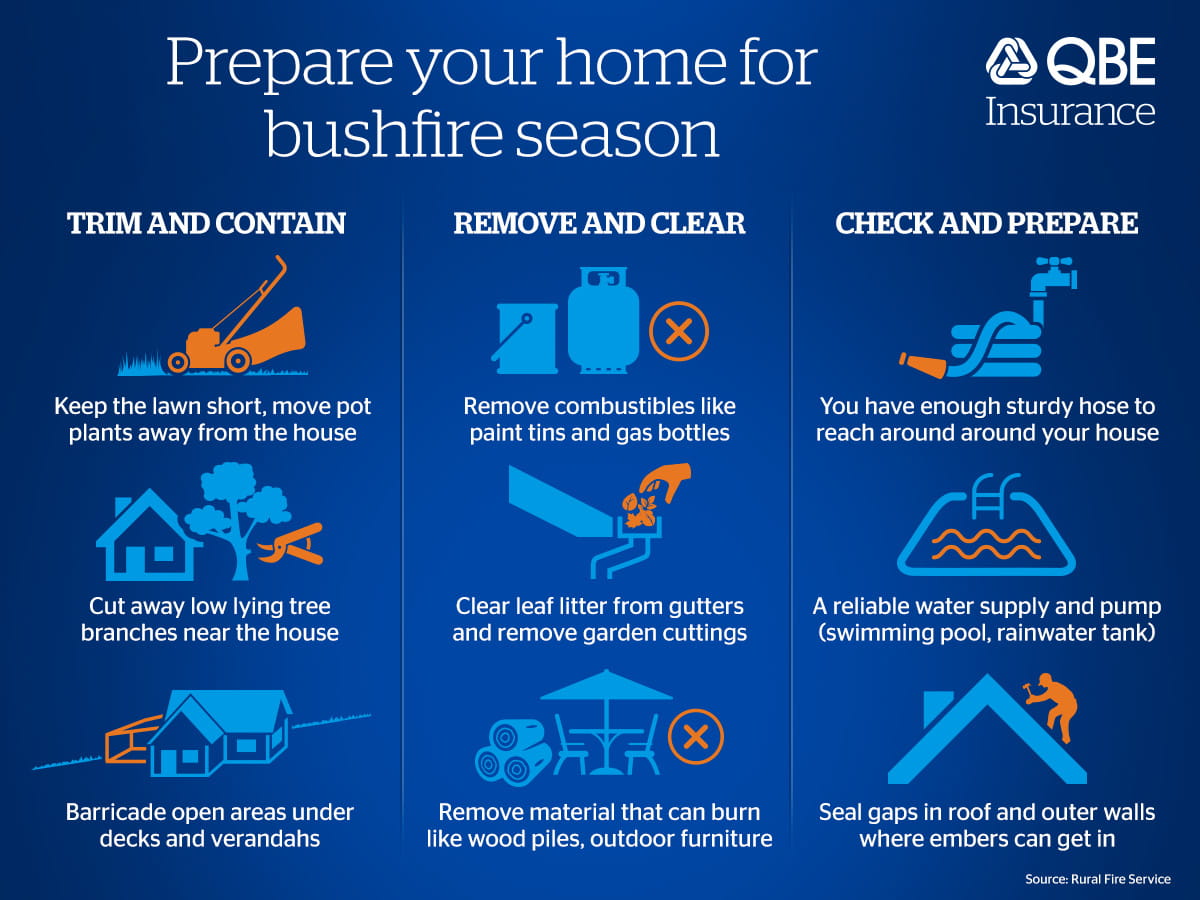Prevention Tips
Effective strategies to protect your home and property from bushfires.
- Keep Grass Short: Regularly mow and water your lawn to prevent long grass from becoming a fire hazard.
- Clear Debris: Clean leaves, twigs, and other flammable materials from gutters, roofs, and around your home.
- Trim Trees and Shrubs: Ensure tree branches do not overhang your house and keep shrubs well-trimmed to prevent fire spread.
- Move Firewood and Gas Bottles: Keep flammable materials like firewood and gas bottles at a safe distance from your home.
- Install Metal or Stone Fences: These materials can protect your property from radiant heat and embers.
- Metal Fly Screens and Shutters: Install these on windows and vents to protect glass from radiant heat.
- Prepare an Emergency Kit: Have a kit ready with water, food, medications, and important documents.
- Develop a Bushfire Survival Plan: Discuss and practice your bushfire survival plan, including evacuation routes and what to take.
- Use Fire-Resistant Plants: Landscape your garden with fire-resistant plants that are less likely to catch fire.
- Install a Sprinkler System: Set up a sprinkler system on your roof and around your property to help combat embers.
- Seal Gaps and Openings: Close off gaps in your roof, walls, and floors to stop embers from entering your home.
- Maintain Water Sources: Ensure you have adequate water supplies and that garden hoses can reach all parts of your property.
- Create Firebreaks: Clear vegetation and create firebreaks around your property to slow fire spread.
- Stay Informed: Keep up-to-date with fire danger ratings and warnings via local radio, TV, and online sources.
- Be Ready to Evacuate: Be prepared to leave early if there is a bushfire threat, following local authorities' advice.

How to Prepare Your Home and Property
Comprehensive guidelines to mitigate the risk of bushfire damage.
- Regular Mowing: Mow lawns and remove cut grass.
- Fire-Resistant Plants: Maintain a garden with plants less likely to catch fire.
- Prevent Ember Entry: Seal gaps in walls, roofs, and floors.
- Protect Windows and Doors: Install shutters or metal screens and fit seals around doors and windows.
- Building Renovations: Consider fire-resistant materials for new builds or renovations.
- Clear Access: Keep driveways and access roads clear for emergency vehicles.
- Visible Property Number: Display a clear property number for emergency services.
- Check Firefighting Tools: Regularly inspect hoses and extinguishers.
- Create Defensible Space: Clear flammable vegetation within 30 metres of your home.
Safety Measures During Bushfire Season
Key steps to ensure safety during bushfire season.
- Fire Danger Ratings: Monitor fire danger ratings and warnings.
- No Spark Tools: Avoid using power tools and machinery that can spark a fire on high-risk days.
- Charged Phones: Keep mobile phones charged and have backup power sources.
- Essential Supplies: Prepare an emergency kit with water, food, first aid supplies, and other essentials.
- Plan Ahead: Know the evacuation routes and have a plan for where to go.
- Safety Gear: Wear long-sleeved shirts, pants, and sturdy shoes.
- Pet and Livestock Safety: Move livestock and pets to safer areas well ahead of a fire threat.
- Stay Updated: Follow local radio stations and official websites for updates and instructions.
- Early Evacuation: Be prepared to leave early if there's any doubt about your safety.
- Update Regularly: Review and update your bushfire survival plan as needed.